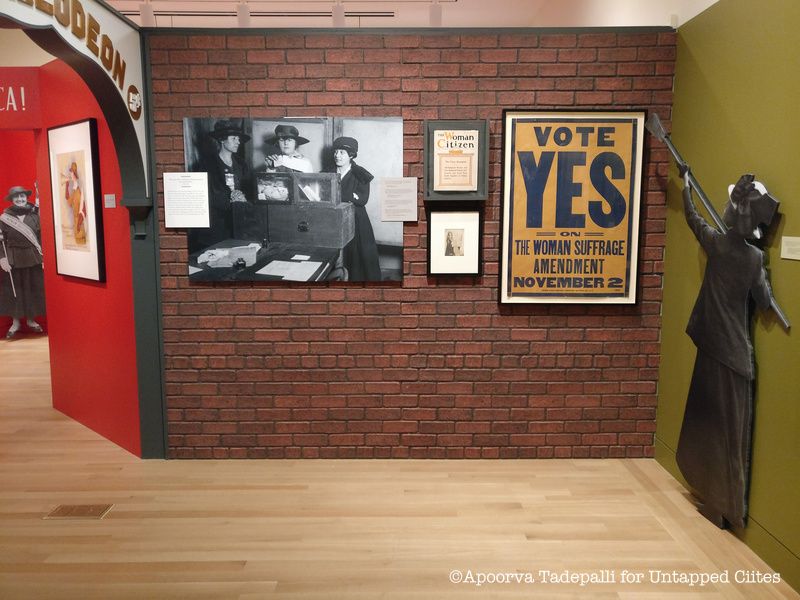Artist-Led Tour of "ENCORE" Photo Exhibit w/ Mark S. Kornbluth
Join photographer Mark S. Kornbluth for a visual exploration of NYC's Broadway theaters at Cavalier Galleries!


Since it was first suggested at the 1910 International Women’s Conference in Copenhagen, Denmark, International Women’s Day has been celebrated every year on March 8 . To honor this day, we’re taking a look back at the suffragettes who led the Women’s Suffrage Movement here in New York City, ultimately paving the way for the fight for women’s equality nationwide.
While the 19th amendment — granting women the right to vote — wasn’t passed by Congress until 1919, trailblazers in New York were organizing and demanding civil rights long before the idea of women’s equality gained traction nationwide. New York State is often recognized as the epicenter of the women’s suffrage movement, most notably due to the conventions held there, including the 1848 convention in Seneca Falls and the subsequent event held in Rochester. But the suffrage movement wasn’t just taking place upstate: women in New York City were defying police bans and holding public meetings of their own. The largest and most recognized suffrage parade in 1915 saw over 25,000 women marching up Fifth Avenue, but the efforts of these suffragettes actually began much smaller years earlier. Despite being faced with opposition from police and men, who attended their early rallies to mock them, the women of New York City fought on.

Beginning in 1907, New York City’s Women’s Progressive Suffrage Union launched its campaign outside the Metropolitan Life Building. The group was mocked by a crowd of mostly men, but the women continued to engage with the audience and eventually persuaded many of the attendees to sign a petition that asked the federal government to grant women voting rights.
Their efforts continued through 1908, when the women announced that they were going to be hosting the first ever women’s suffrage parade. The members of the Suffrage Union declared that they would be marching from their office located off of Union Square towards the Manhattan Trade School on E. 23rd Street for another public meeting. Their progressive ideas and plan for action did not go over well with the authorities: the police at the time even denied to issue them a permit for the march.
However, on February 16, 1908, the Union went forward with its plans, despite not having a permit. Since members were marching without official permission from the city, police officers showed up to break up the event. However, the authorities were unsuccessful in their efforts and the women continued forward. Although often forgotten, this was the nation’s first unofficial suffragette march, with a total of only 23 women participating. Even though the initial crowd was small, the Union continued to organize marches throughout the city, and host weekly meetings and strikes at workplaces. In 1910, the Union’s march drew a crowd of a couple hundred. Then, a year later, a crowd of thousands.
The repetition of annual events made the idea of women suffrage seem less radical. By hosting these marches through the streets of New York City, these women helped encourage favorable publicity and eventually started to gain official city permission. These smaller events helped lay the groundwork for the huge 1915 parade, which eventually propelled New York to pass legislation allowing women to vote in 1917.
Next, check out Museum of the City of New York Celebrates A Century of Women in Politics in NYC & Beyond and Fun Maps: Interactive Story Map Highlights 40+ NYC Landmarks Associated With Women’s Suffrage Movement.
Subscribe to our newsletter